Recently I have had the opportunity to review the first 14 months of Duke’s COPE fund, and it has been an interesting exercise.
COPE, of course, is the Compact for Open Access Publishing Equity, a plan by which academic libraries create funds to help faculty authors pay the article processing fees (APCs) that some open access journals charge as a way to replace subscription fees. Duke established a modest COPE fund in October 2010, and it was re-funded for fiscal year 2011-12.
Now, at the end of November 2011, I find that in 14 months we have reimbursed open access publishing fees for 20 articles written by 18 faculty members. We have six more COPE applications waiting for completion. Assuming that all of them are completed and reimbursed, we will have exhausted the available funding for COPE for the first time.
The authors we have reimbursed are predominately, but not exclusively, scholars in the biomedical sciences. That group is evenly divided between medical school and University-side scientists, but faculty in diverse fields like environmental studies and evolutionary anthropology have also benefited from the fund. The largest group of articles we helped fund were published with journals from the Public Library of Science, followed by Hindawi, Frontiers in Research, and BioMed Central. All of them are, of course, peer-reviewed publications.
With a relatively new initiative like COPE, it is not entirely clear how success should be measured. Is it more successful to spend the entire COPE fund on a campus, or to have it go unused? The answer, I suppose, would depend on the reasons behind the use or non-use.
At Duke we have been very clear that the purpose of COPE is to provide incentives for new models of scholarly publishing and to support open access. As the fund administrator, I am convinced that there is a good deal more open access publishing amongst our faculty than I previously expected. These 25+ articles are very much only the tip of the iceberg. And I cannot say for sure that the COPE fund caused an increase is that type of publishing; I am inclined to think faculty are turning to open access because of its numerous benefits, and that COPE funding is not the strongest factor for most of them. I have been told by authors, however, that COPE is an important example of the University “putting its money where its mouth is,” and I am pleased by that perception.
As open access publishing evolves, different funding models are being tried. It is important to recognize that author-side fees may not be the “winner” over time; many OA journals even now do not rely on such fees, although the best-known ones do. Nevertheless, we are clearly seeing an important transitional movement in scholarly publishing, and a COPE fund is one way for an institution to both encourage that transition and to tangibly affirm a commitment to open access for scholarship.
I expect that at Duke we will reexamine the policies and procedures we have in place for COPE, as we consider how it is to be re-funded, to see if they actually serve the incentive purposes behind the fund. In that task we will gain significant guidance from this recent blog boost by Stuart Shieber of Harvard University’s Scholarly Communications Office, about how funding agencies should assume the task of paying open access article fees. Stuart’s point about funders is important, and I hope that the policies he recommends are widely adopted. But his post is also a cogent and compelling re-assertion of those incentive purposes that COPE is intend to serve and how different policy decisions relate to the overall goals. As such, it provides a helpful guide for anyone considering a COPE fund or considering how to make such a fund more effective.

